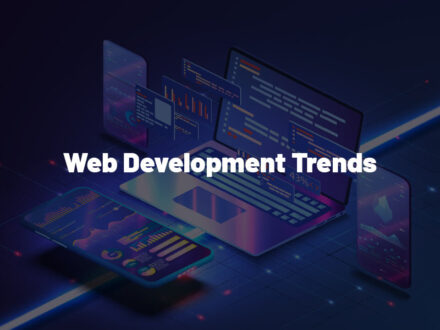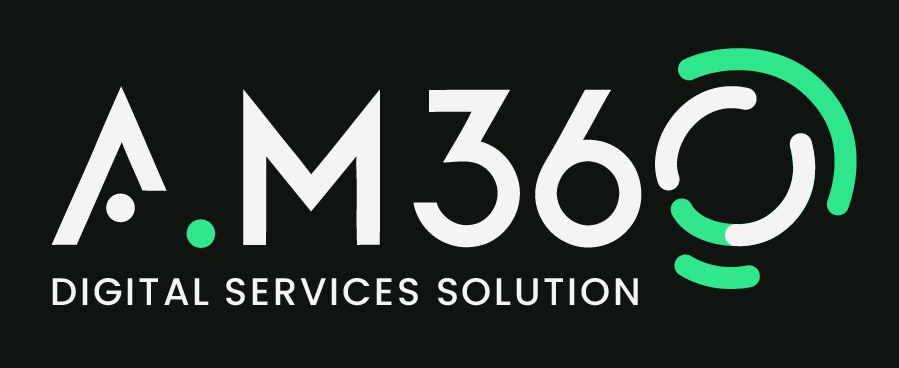
Social Media Marketing: A Step-by-Step Guide to Growing Your Brand Online
Leverage Facebook, Instagram, LinkedIn, Twitter, Content, Ads, and Influencers to Boost Brand Awareness Introduction In today’s digital-first world, social media marketing isn’t just an option—it’s a necessity. With over 5 billion active social media users globally, platforms like Facebook, Instagram, LinkedIn, and Twitter offer unparalleled opportunities to connect with audiences, build brand awareness, and drive sales. However, success requires strategy, consistency, and a deep understanding of each platform’s unique dynamics. This 3,000-word guide will walk you through actionable steps to grow your brand online, covering Facebook marketing, Instagram growth, LinkedIn strategies, Twitter engagement, content marketing, social media ads, and influencer marketing. Let’s dive in. Step 1: Define Your Goals and Audience Before posting a single tweet or Instagram Story, clarify your objectives. Are you aiming to: Increase brand awareness? Drive website traffic? Generate leads? Boost sales via social media ads? Next, research your audience. Tools like Facebook Audience Insights and Google Analytics reveal demographics, interests, and behaviors. For example, LinkedIn caters to B2B professionals, while Instagram attracts Gen Z and millennials. Tailor your content marketing strategy to resonate with these segments. Pro Tip: Create buyer personas to visualize your ideal customer. This ensures your social media marketing efforts align with audience needs. Step 2: Master Platform-Specific Strategies Each social platform demands a unique approach. Let’s break them down: Facebook Marketing: Build Communities and Drive Sales With 3 billion monthly active users, Facebook remains a cornerstone of social media marketing. Optimize Your Page: Use a recognizable profile picture (e.g., logo), write a keyword-rich bio, and link to your website. Content Mix: Share videos (55% of users watch daily), carousel posts for product showcases, and polls to boost engagement. Facebook Ads: Target users by location, interests, and behaviors. Use dynamic ads to retarget website visitors. Groups: Create or join niche communities to foster loyalty. For example, Sephora’s Beauty Insider Community drives 2x higher engagement. External Resource: Meta Business Suite simplifies scheduling and analytics. Learn more here. Instagram Growth: Visual Storytelling and Reels Domination Instagram’s algorithm prioritizes Reels, so capitalize on short-form video. Profile Optimization: Use a branded hashtag in your bio (e.g., #JustDoIt) and link to landing pages via Linktree. Content Strategy: Reels: Post trending audio clips and tutorials. Stories: Use polls, quizzes, and “Swipe Up” links (for accounts with 10k+ followers). Guides: Curate product roundups or tips. Hashtags: Mix popular (1M+ posts) and niche tags (e.g., #SustainableFashion) to maximize reach. Collaborations: Partner with micro-influencers (10k–100k followers) for authentic promotions. Case Study: Gymshark grew to $1.4B using user-generated content (UGC) and influencer partnerships. LinkedIn Strategies: B2B Networking and Thought Leadership LinkedIn is the go-to for B2B social media marketing. Company Page: Showcase services, share case studies, and post job openings. Content Ideas: Long-form articles on industry trends. Infographics highlighting company milestones. Employee testimonials to humanize your brand. LinkedIn Ads: Use Sponsored Content and Message Ads to target decision-makers by job title. Engagement: Comment on posts from industry leaders to boost visibility. Stat Alert: LinkedIn drives 80% of B2B social media leads (Source). Twitter Engagement: Real-Time Conversations and Hashtag Trends Twitter’s fast-paced environment thrives on timely interactions. Profile Setup: Pin a tweet promoting your latest blog or product. Content Types: Threads breaking down complex topics. Participate in trending hashtags (e.g., #MotivationMonday). Respond swiftly to customer queries (users expect replies within 30 minutes). Twitter Ads: Promote trending tweets or run follower campaigns. Lists: Create private lists to monitor competitors or industry influencers. Step 3: Craft a Winning Content Marketing Strategy Content fuels social media marketing. Follow this framework: Content Calendar: Plan posts 1–2 months ahead using tools like Hootsuite or Asana. Balance promotional, educational, and entertaining content. Content Types: Blogs and eBooks (drive traffic via LinkedIn or Twitter). Videos (TikTok-style edits for Instagram, webinars for LinkedIn). Carousels (ideal for Facebook and Instagram how-tos). SEO Integration: Embed keywords like “social media ads” or “brand awareness” in captions and blog cross-posts. External Resource: Use Canva to design visually consistent posts. Explore templates. Step 4: Leverage Social Media Ads for Precision Targeting Paid ads amplify reach and conversions. Best practices: Facebook/Instagram Ads: Use the Advantage+ suite for automated targeting. A/B test ad creatives. LinkedIn Ads: Target by job title for lead generation. Twitter Ads: Promote viral tweets to capitalize on existing engagement. Stat Alert: Businesses earn 2forevery2forevery1 spent on Facebook Ads (Meta Report). Step 5: Boost Brand Awareness with UGC and Contests User-generated content (UGC) builds trust: Repost customer photos (with permission). Run hashtag contests (e.g., “Share your #OOTD with our product”). Feature testimonials in Stories or Reels. Example: GoPro’s #GoProTravel campaign generated 1 million UGC posts. Step 6: Partner with Influencers for Authentic Reach Influencer marketing drives 11x higher ROI than traditional ads: Micro-Influencers: Partner with niche creators (e.g., fitness coaches for activewear brands). Compensation: Offer free products, affiliate commissions, or flat fees. Track Metrics: Use tools like AspireIQ to monitor engagement and conversions. Case Study: Daniel Wellington grew to $200M using influencer campaigns. Step 7: Analyze and Optimize Use platform analytics (e.g., Instagram Insights) and tools like Google Data Studio to track: Engagement rate Click-through rate (CTR) Return on ad spend (ROAS) Adjust your strategy monthly based on data trends. Conclusion Mastering social media marketing requires blending creativity, data, and adaptability. By leveraging Facebook marketing, Instagram growth, LinkedIn strategies, Twitter engagement, content marketing, social media ads, and influencer marketing, you’ll build lasting brand awareness and a loyal audience. Start small, stay consistent, and watch your brand thrive online. FAQs How much should I budget for social media ads? Start with 5–5–10/day per platform, then scale based on ROI. Which platform is best for B2B? LinkedIn dominates B2B lead generation. How often should I post? Instagram: 3–5x/week; Twitter: 1–3x/day; LinkedIn: 2–3x/week. Ready to elevate your brand? Bookmark this guide and share it with your team! For more insights, explore HubSpot’s Social Media Marketing Guide.
Read More
Website Development Trends in 2025: What You Need to Know
Stay Ahead of the Curve with Emerging Technologies, Coding Innovations, and Optimization Strategies The digital landscape is evolving faster than ever, and website development is at the heart of this transformation. By 2025, businesses and developers must adapt to groundbreaking trends, tools, and user expectations to remain competitive. From AI-driven interfaces to decentralized web architectures, this in-depth guide explores the web development trends, coding languages, and strategies—like WordPress development, eCommerce websites, and website speed optimization—that will dominate 2025. 1. The Top 7 Web Development Trends Shaping 2025 1.1 AI-Powered Development Tools Artificial Intelligence (AI) is revolutionizing website development by automating repetitive tasks. Tools like GitHub Copilot and ChatGPT-5 now generate code snippets, debug errors, and even design user interfaces. For instance, platforms like Wix ADI (Artificial Design Intelligence) leverage AI to create personalized websites in minutes, reducing manual coding efforts. 1.2 Voice Search Optimization With 55% of households expected to own smart speakers by 2025 (Statista, 2023), voice-activated interfaces are critical. Developers are integrating natural language processing (NLP) and schema markup to optimize sites for voice queries, ensuring compatibility with Alexa, Google Assistant, and Siri. 1.3 Progressive Web Apps (PWAs) PWAs bridge the gap between websites and mobile apps, offering offline functionality and push notifications. Companies like Starbucks saw a 2x increase in user engagement after adopting PWAs (Google Developers Case Study). 1.4 Web3 and Decentralized Platforms Blockchain technology is reshaping custom web solutions with decentralized apps (dApps) and tokenized ecosystems. Platforms like Ethereum and Solana enable secure, transparent transactions, while IPFS (InterPlanetary File System) revolutionizes data storage. 1.5 Motion UI and Immersive Experiences Advanced animations, 3D elements, and augmented reality (AR) are enhancing user engagement. Libraries like Three.js and React Spring empower developers to create fluid, interactive designs without compromising website speed optimization. 1.6 Cybersecurity Integration As cyber threats grow, frameworks like OWASP Top 10 compliance and HTTPS encryption are non-negotiable. Automated security audits via tools like Snyk are becoming standard in web development workflows. 1.7 Low-Code/No-Code Platforms Democratizing website development, platforms like Webflow and Bubble enable non-developers to build functional sites. However, custom web solutions still require traditional coding for complex features. 2. Coding Languages to Master in 2025 2.1 JavaScript Dominance Continues JavaScript remains the backbone of front-end vs back-end development. Frameworks like React, Vue.js, and Svelte are evolving to support real-time applications and server-side rendering (SSR). 2.2 Rust for Performance-Critical Systems Rust’s memory safety and speed make it ideal for back-end systems. Companies like Microsoft and Dropbox use Rust to build secure, high-performance tools (The Rust Foundation). 2.3 Python’s AI and ML Capabilities Python dominates AI-driven website development with libraries like TensorFlow and PyTorch. Its simplicity also fuels backend frameworks like Django and Flask. 2.4 TypeScript Adoption Soars TypeScript’s static typing reduces runtime errors, making it a favorite for enterprise-level projects. Over 80% of developers now prefer TypeScript for large-scale apps (2023 Stack Overflow Survey). 3. Front-End vs Back-End: Evolving Roles in 2025 3.1 Front-End: Beyond Aesthetics Modern front-end development focuses on performance and accessibility. Developers use tools like Lighthouse and Web Vitals to audit website speed optimization, while CSS-in-JS libraries streamline responsive design. 3.2 Back-End: Scalability and Security Back-end systems prioritize microservices architectures and GraphQL APIs. Platforms like AWS Lambda and Firebase enable serverless computing, reducing infrastructure costs. 3.3 The Rise of Full-Stack Developers Blurring front-end vs back-end boundaries, full-stack developers proficient in frameworks like Next.js and Nest.js are in high demand. 4. WordPress Development in 2025: More Than Just a CMS 4.1 Headless WordPress Decoupling the front-end and back-end, headless WordPress allows developers to use React or Vue.js for dynamic interfaces while retaining WordPress’s robust CMS capabilities. 4.2 AI-Powered Plugins Plugins like Akismet and WordLift now leverage machine learning for spam detection and content personalization, enhancing eCommerce websites and blogs. 4.3 Gutenberg Editor Advancements The block editor now supports dynamic data integration, making it easier to build complex layouts without custom code. 5. eCommerce Websites: Personalization and Omnichannel Experiences 5.1 AI-Driven Product Recommendations Tools like Shopify’s Sensei analyze user behavior to suggest products, boosting conversion rates by up to 35% (Shopify Blog). 5.2 AR/VR Try-Ons Augmented reality lets users visualize products in real-time. IKEA’s AR app, for example, increased engagement by 300% (IKEA Case Study). 5.3 Unified Omnichannel Platforms Integrating social media shops (Instagram, TikTok) with eCommerce websites ensures seamless customer journeys. 6. Website Speed Optimization: Core Web Vitals and Beyond 6.1 Edge Computing CDNs like Cloudflare Edge reduce latency by processing data closer to users. 6.2 Image and Video Compression WebP and AVIF formats cut load times by 50% compared to JPEG (Google Developers). 6.3 Lazy Loading and Code Splitting Frameworks like React implement lazy loading to prioritize above-the-fold content. 7. Custom Web Solutions: Tailored for Tomorrow Businesses are ditching one-size-fits-all platforms for custom web solutions built with Jamstack (JavaScript, APIs, Markup). Headless CMS platforms like Contentful and Strapi offer flexibility, while DevOps pipelines ensure rapid deployment. Conclusion: Adapt or Get Left Behind The website development landscape of 2025 demands agility, innovation, and a user-centric approach. Whether you’re leveraging WordPress development, optimizing eCommerce websites, or adopting custom web solutions, staying informed is key. By mastering emerging coding languages, balancing front-end vs back-end priorities, and prioritizing website speed optimization, developers and businesses can thrive in this dynamic era. Ready to future-proof your web presence? Start experimenting with these trends today.
Read More
The Ultimate Guide to Website Design: Creating Stunning Websites That Convert
In today’s digital-first world, your website is often the first interaction potential customers have with your brand. A well-designed website doesn’t just look good—it drives engagement, builds trust, and converts visitors into loyal customers. But how do you create a site that balances aesthetics, functionality, and performance? This ultimate guide dives deep into the core principles of website design, covering everything from responsive design and UX/UI best practices to color psychology and web development basics. Let’s transform your online presence into a conversion powerhouse. 1. What Makes a Website Design Successful? A successful website design seamlessly blends form and function. It’s visually appealing, easy to navigate, and optimized for performance across devices. Key elements include: Clarity: Users should understand your purpose within seconds. Speed: Pages must load quickly (under 3 seconds) to reduce bounce rates. Accessibility: Ensure your site is usable for people with disabilities. Call-to-Action (CTA): Guide users toward desired actions (e.g., “Buy Now” or “Contact Us”). According to Google’s PageSpeed Insights, 53% of mobile users abandon sites that take longer than 3 seconds to load. Speed isn’t just a convenience—it’s a critical ranking factor. 2. Responsive Design: The Foundation of Modern Websites Responsive design ensures your site adapts to any screen size, from desktops to smartphones. With mobile devices accounting for 58% of global web traffic, a non-responsive site risks alienating over half your audience. Key Principles of Responsive Design Fluid Grids: Use percentages instead of fixed pixels for layout elements. Flexible Images: Ensure images scale with CSS properties like max-width: 100%. Media Queries: Apply CSS rules based on device characteristics (e.g., screen width). Test your site’s responsiveness with tools like Google’s Mobile-Friendly Test. 3. UX/UI Design: Bridging Aesthetics and Functionality UX (User Experience) and UI (User Interface) design work hand-in-hand to create intuitive, enjoyable interactions. UX Design: The Blueprint User Research: Understand your audience’s needs through surveys and personas. Wireframing: Map out page layouts using tools like Figma or Adobe XD. Usability Testing: Identify pain points with tools like Hotjar. UI Design: The Visual Layer Consistency: Maintain uniform fonts, colors, and button styles. Hierarchy: Use size, color, and spacing to prioritize content. Microinteractions: Add subtle animations (e.g., hover effects) to enhance engagement. As Nielsen Norman Group notes, every 1investedinUXyields1investedinUXyields100 in return—a 9,900% ROI. 4. Mobile-Friendly Websites: Why They’re Non-Negotiable Mobile-friendly websites aren’t just responsive—they’re optimized for touchscreens, slow connections, and vertical scrolling. Mobile Optimization Tips Thumb-Friendly CTAs: Place buttons within easy reach of thumbs. Simplify Navigation: Use hamburger menus or bottom navigation bars. Compress Media: Reduce image sizes with tools like TinyPNG. Google’s mobile-first indexing prioritizes mobile versions of sites for ranking, making mobile optimization essential for SEO. 5. Color Psychology: Influencing Emotions and Actions Color psychology explores how hues shape perceptions and behaviors. For example: Blue: Trust and professionalism (used by Facebook and LinkedIn). Red: Urgency and excitement (common in “Sale” banners). Green: Growth and tranquility (favored by health and finance brands). A study by the University of Winnipeg found that 62-90% of product assessments are based on color alone. Use tools like Coolors to create harmonious palettes. 6. User Experience (UX): Beyond the First Click User experience encompasses every interaction, from landing pages to checkout. Enhancing UX Reduce Cognitive Load: Limit choices to avoid decision fatigue. Improve Accessibility: Follow WCAG guidelines for text contrast and keyboard navigation. Leverage Fitts’s Law: Make clickable targets large and spaced apart. Netflix’s auto-play feature and Amazon’s 1-Checkout are prime examples of UX driving conversions. 7. Web Development Basics: The Backbone of Your Site Even the most beautiful design fails without solid web development basics. Core Components HTML/CSS: Structure and style your content. Learn fundamentals via MDN Web Docs. JavaScript: Add interactivity (e.g., form validation). CMS Platforms: Use WordPress or Shopify for easy management. Clean code improves load times and SEO. For example, minify CSS/JS with Webpack. 8. Conclusion: Building a Future-Proof Website Great website design merges creativity with technical precision. By prioritizing responsive design, UX/UI, and mobile-friendly practices, you’ll create a site that not only ranks on Google but also resonates with users. Remember, color psychology and user experience are your secret weapons for driving action, while web development basics ensure your site stands the test of time. Ready to elevate your website? Start auditing your site today using tools like Google Analytics and Lighthouse, and iterate based on data-driven insights. Your journey to a stunning, high-converting website begins now.
Read More